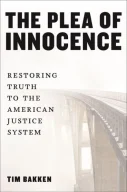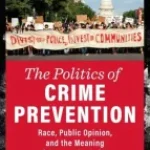The Plea of Innocence: Restoring Truth to the American Justice System
Author: Tim Bakken
Publisher: NYU Press, 2022. 248 pages.
Reviewer: Ronald F. Wright | January 2024
We sometimes treat wrongful convictions as tragic aberrations in the adversarial system. Criminal courts are bound to make mistakes when we do not invest in the work of courtroom professionals. Furthermore, we do not create proper accountability for police, prosecutors, judges, and defense attorneys when they fail; as a result, they continue to underperform. In this view, the machinery of justice needs better mechanics and maintenance.
Tim Bakken, however, explains wrongful convictions as the inevitable outcome of the adversarial process, even when it operates as designed. These life-changing mistakes flow from the basic adversarial roles we assign to defense attorneys and prosecutors. Bakken’s solution is to redesign American criminal courts to resemble the courts of continental Europe and elsewhere in the civil law world.
Bakken proposes an innovative device to move our courts in that direction: a “plea of innocence” from the defendant (p. 8). When defendants enter such pleas, their defense attorneys must affirm to the court that they “believe their clients are innocent” and the defendants must agree to an interview with prosecutors to “assert the existence of exonerating facts” (p. 8). Prosecutors, for their part, must undertake a “reasonably diligent search” for those exonerating facts (p. 8). If the prosecution, after it completes this extra investigative effort, continues to press the case, then the case would go to trial under a standard of proof even higher than “beyond a reasonable doubt,” to compensate the defendant for those earlier disclosures to the government (pp. 174–78). The judge could punish any bad faith conduct by the prosecution or the defense during this interchange by instructing the jury to draw adverse inferences against the party acting in bad faith.
Bakken begins his advocacy for this creative device by describing the various ways that criminal procedure doctrine in the U.S. tolerates lies and secrecy. The law allows police officers to lie during interrogations (p. 44). Confidentiality rules encourage defense lawyers to suppress truthful but incriminating facts (p. 50), while high caseloads and low compensation rates discourage them from hiring enough investigators (p. 96). Prosecutors, he says, defend old but faulty convictions because they are elected officials who want to protect their conviction rates as evidence of their effectiveness in suppressing crime (p. 40). Bakken also criticizes the limited capacity of appellate courts and collateral proceedings to discover and respond to new evidence of innocence (pp. 26–36). He traces this institutional devaluation of truth—on the part of every actor in the system—back to the origins of the adversarial process, with particular emphasis on John Langbein’s work on English criminal trials in the eighteenth century in the Old Bailey (p. 57). As a result of prioritizing the self-interest of advocates over the pursuit of truth, Bakken asserts, adversarial court systems produce more wrongful convictions than inquisitorial systems (pp. 77–78).
These design failures lead Bakken to propose many different reforms in U.S. criminal courts to promote a greater emphasis on truth-finding. After praising inquisitorial systems for their openness to experimentation, he recommends a similar search for hybrid procedures in the United States. Throughout the book, Bakken tosses out idea after idea, some original and some familiar from canonical works of comparative law. These procedural changes—large and small—would move American courts in the direction of inquisitorial systems. Some of these changes would be profound and expensive; some would be unconstitutional under current jurisprudence.
The investigation phase of the criminal process receives the greatest attention from Bakken, because evidence that reveals the truth does not appear during trial unless somebody takes the trouble to find it before the trial starts (p. 107). Bakken calls for criminal investigations that are less firmly in the control of prosecutors and police (pp. 97–101), with a greater role for neutral magistrates (p. 157)—a familiar figure in the civil law world. These magistrates would suggest new lines of inquiry and prevent tunnel vision among police investigators.
Bakken also critiques Miranda v. Arizona (1966), a familiar bête noir of conservative scholars, because police warnings about the right to silence reinforce the preference of the adversarial system for non-cooperation and silence from the defense (pp. 127–28, 133). Greater participation from the defense, he argues, would lead to more exonerating facts and fewer wrongful convictions. Bakken holds similar views on the exclusionary rule (p. 37).
Moving from the investigation to the trial stage, Bakken complains that the defendant’s right to silence at trial limits the state’s power to find the truth. He also criticizes the hearsay rule and other traditional common law limits on evidence (pp. 134, 137–40). Bakken suggests instead that defendants be allowed to testify at trial without taking an oath that would expose them to perjury charges, a traditional feature of criminal proceedings in the civil law world.
Bakken then criticizes state court efforts to limit the potential damage from flawed eyewitness testimony and identification procedures. State appellate courts have made it easier for defendants to introduce expert testimony that stresses some of the weaknesses of eyewitness testimony and identification procedures. The caselaw also gives more latitude to trial judges to instruct jurors about the general shortcomings of these types of evidence. Bakken, counterintuitively, does not support these evidence reforms, even though these categories of evidence are responsible for so many wrongful convictions. Bakken objects to them because the reforms respond to the risk of error on a categorical basis (pp. 84–91), rather than requiring the defense to show potential error linked to the specific circumstances of the case. While Bakken does endorse a double-blind identification requirement at the identification stage (pp. 144–45), his critiques of expert testimony and jury instructions at trial are puzzling. These devices offer accurate descriptions of the current science about eyewitness testimony and are designed to give the jury relevant context. So far, there is no compelling evidence that these remedies produce enough unjustified acquittals to counterbalance the many documented wrongful convictions that continue to flow from mistaken eyewitness testimony.
One type of defense attorney behavior at trial receives Bakken’s harshest judgment: the use of cross-examination questions and closing arguments that cast doubt on prosecution witnesses, even when the attorneys “know [the witnesses] to be truthful and accurate” (p. 155). He calls for the repeal of ethical rules that allow attorneys under these circumstances to “tell juries and judges” that such witnesses “are lying or inaccurate” (p. 155). This critique, however, misstates the law. Under Model Rule of Professional Conduct 3.3, an attorney “shall not knowingly …make a false statement of fact … to a tribunal.” The “knowledge” standard is a high one, but once a defense attorney “knows” that a prosecution witness testified truthfully, the attorney cannot personally assert that the witness lied or was inaccurate. At the same time, the attorney may properly point to truthful facts about that testimony that could lead a juror to hold a reasonable doubt, even if the attorney personally believes the testimony is accurate. This is not defense trickery, but a healthy respect for the jury’s responsibility as factfinder in the context of mixed signals.
Bakken returns to more productive uses of inquisitorial system models when he moves to the post-conviction process. He argues for an expanded fact-correcting role for appellate courts in the U.S. (pp. 110–11) and for more fact-sensitive collateral review. Bakken draws instructive parallels to the factfinding powers of appellate courts in military justice systems (pp. 116–18).
We can learn much by seeing our familiar world anew, from the outside. This book uses the outsider’s vantage point to good effect, mixing familiar criticisms of common law adversarial process with original ideas for procedures to address those problems. Bakken’s proposals would promote accurate factfinding above competing values, such as respect for privacy and defendant autonomy, favored by current doctrine. Movement in this direction, to reduce errors even at the cost of other values, aligns well with public opinion in the U.S., where surveys and experiments routinely show that people disapprove equally of false positives and false negatives in the criminal courts. The Blackstonian ten-to-one ratio does not win popularity contests in the United States (see Garrett & Mitchell, 2023).
But the insiders’ critiques of their own systems also matter. Many current disputes in criminal court reform in the U.S. speak pointedly to the wrongful convictions that are Bakken’s motivating problem, yet he fails to engage these debates. For instance, it is remarkable that a book about accurate outcomes in U.S. criminal courts has almost nothing to say about criminal discovery. Although these rules regulating the pretrial exchange of information receive a passing mention (pp. 148–49), they deserve a more thorough treatment. A close review of policy debates about new discovery rules—there have been newsworthy struggles in New York and elsewhere in recent years—would tell readers much about the capacity of adversarial court systems to change. When the parties share more information, adversarial trial roles move closer to the dossier-building roles of attorneys in the civil law world.
Debates over sentencing reform and plea bargaining regulations also connect directly to accurate outcomes. We learn more every year about the size and distribution of trial penalties, which are made possible by large gaps between lower sentences negotiated through guilty pleas and the higher sentences imposed after conviction at trial. As those gaps grow, defendants become less willing to test the accuracy of the prosecution’s case. Although Bakken treats guilty pleas as a non-problem for wrongful convictions (p. 162), the National Registry of Exonerations makes it clear that many defendants plead guilty to false charges, simply because the alternatives are even worse (see National Registry of Exonerations).
Finally, while Bakken surveys court systems around the world to explain and prevent wrongful convictions, he does not look very far outside the courtroom to explain the errors that happen inside the courtroom. I have found over the years that close attention to social inequality—the circumstances of the lives of defendants and victims and witnesses, along with the trusting (or distrustful) relationships between communities and public enforcers of the criminal law—can show us a lot about court performance. Worries about process—a concern Bakken treats as an unproductive and self-serving mania among common law attorneys—can serve the purposes of truth. Adversarial courts that find a way to listen to the people most affected by crime and criminal law enforcement can ultimately address the accuracy problem, along with low clearance rates and other ills. People who feel like they have been heard and treated fairly are more likely to see the courts as legitimate and worthy of trust (Tyler, 2003). Communities that trust police, prosecutors, public defenders, and courts are more willing to cooperate as witnesses and are slower to resort to self-help when they are victims of crime. When procedures deliver trust, they can also deliver more accurate outcomes.
References:
Brandon L. Garrett & Gregory Mitchell, Error Aversions and Due Process, 121 Mich. L. Rev. 707 (2023)
National Registry of Exonerations, https://www.law.umich.edu/special/exoneration/Pages/about.aspx
Tom R. Tyler, Procedural Justice, Legitimacy, and the Effective Rule of Law, 30 Crime and Justice 283 (2003)
Ronald F. Wright is the Needham Y. Gulley Professor of Criminal Law at Wake Forest University School of Law.



